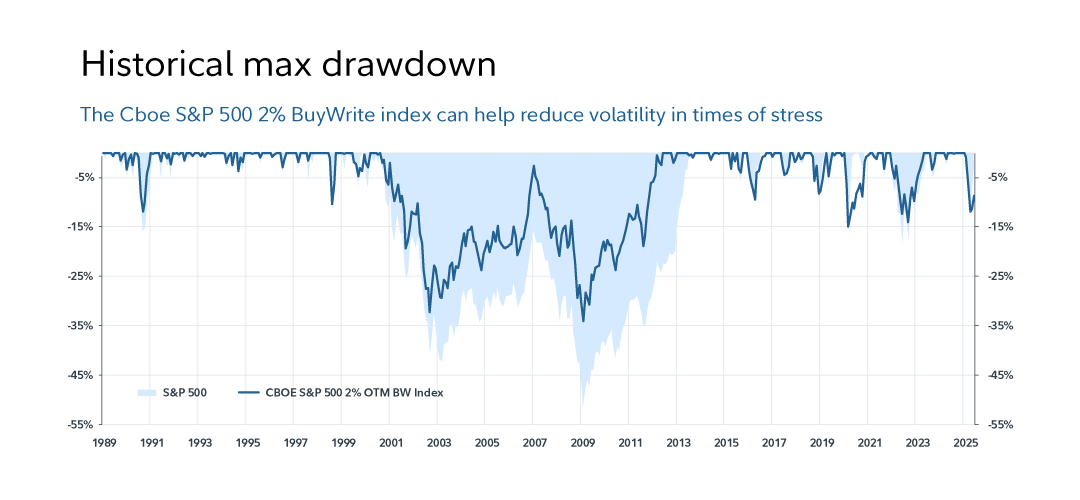
Covered calls explained: Income, risk and how the strategy works
As the Canadian ETF landscape evolves with new strategies to meet diverse investor needs, covered call ETFs are gaining popularity, especially among income-focused investors. Covered call ETFs offer an alternative way to gain equity exposure while generating income by selling call options.
What are call options?
A call option is a contract that gives the buyer the right (but not the obligation) to purchase a set number of shares (usually 100 per contract) of a stock or ETF at a specific price (the strike price) before a specific date (the option expiration date).
The seller, in turn, is obligated to sell the shares to the buyer if they exercise their right, regardless of the market price. To compensate for the risk of potentially selling below market value, the seller receives a premium from the buyer. This premium is the source of income provided by covered call strategies.
How an uncovered call writing strategy works
Let’s say you sell a call option contract on stock ABC with a strike price of $110. If you believe that ABC’s price may not rise above $110, you can receive a $5 premium per share for doing this. What happens next?
| If ABC stays below $110: | If ABC rises above $110: |
| The option expires worthless. You keep the $5 per share premium as profit. | The buyer may exercise the option. You must sell the stock at $110, even if it’s trading higher. |
For example, if ABC hits $150:
- You buy at $150 and sell at $110.
- You experience a $40 loss per share.
- After subtracting the $5 premium, your net loss is $35 per share.
- On a standard contract (100 shares), this would result in a $3,500 loss.
Enter the covered call strategy.
Unlike the above example, a covered call is “covered” because the seller (or writer) of the call option already owns the stock that they’re selling the call option on. That means if the buyer decides to exercise the option (i.e., buy the stock from you), you’re covered, because you already have the shares to sell, and won’t need to buy the shares at market price, which could be costly. If the option expires worthless, you keep the premium. This ownership “covers” the potential obligation.
How does it work?
Suppose you sell a call option contract on stock ABC with a strike price of $110, and this time you also own the underlying stock. If ABC remains below $110, you collect a $5 premium per share, earning $500 in income from 100 shares. What happens next?
If ABC stays below $110 before the option expires: The option expires worthless. You keep the $5 per share premium as profit. If you experience a gain because you got in early on ABC, but the price is less than $110, you also get the profit you made. But if you experienced a loss, you’re still “covered,” because it’s reduced by the premium, buffering your portfolio.
Covered calls and market volatility
Covered call strategies tend to react differently depending on market conditions.
Down markets: Collection of monthly premium can help to mitigate losses in sharp and modest market downturns.
Sideways markets: In sideways markets where the risk of assignment can be lower, monthly premiums may potentially contribute to returns.
Up markets: In modest and sharp up markets, where the risk of assignment increases and the S&P 500 outperforms the strike, the strategy can underperform, because participation is capped, and losses may occur depending on the value at expiration or at point of exercise by the buyer.
A covered call strategy can mitigate market downturns and participate in market upswings.
- Smoothing returns: The premium you earn can offset some of the losses during market dips.
- Lowering breakeven point: If you have collected a premium, your stock may not need to rise as much to be profitable.
- Discouraging panic selling: The income from premiums can make investors more patient during turbulent markets.
The chart below shows the drawdowns of the Cboe S&P 500 2% out-of-the-money BuyWrite Index compared with the S&P 500 index. The Cboe S&P 500 2% out-of-the-money BuyWrite Index can be viewed as a general representation of a covered call strategy on the S&P 500 Index. The chart shows how a covered call strategy can potentially mitigate sharp market downturns, reducing overall portfolio volatility and providing a smoother investment experience.

The benefits and risks of covered call strategies
Covered call strategies may be suitable for investors focused on generating regular income, whether to meet cash needs or supplement returns without selling their holdings. They also allow investors to potentially lock in a higher price target just in case, and generate cash flow in the meantime. They can be useful for those in retirement or drawing down their portfolios, as they can generate tax-efficient cash flows without needing to immediately sell investments.
These strategies tend to perform well in volatile markets, where higher option premiums can boost income. However, while they don’t fully protect against losses, the income from premiums can help soften the impact of market declines by providing a bit of downside protection.
While covered calls may help reduce overall portfolio volatility and generate cash flow, they may also cap upside potential in strong markets. Poorly designed strategies may limit growth. Success depends on thoughtful design and alignment with investor goals.
The key takeaway
Covered call strategies may help investors stay invested in the market while generating income. When thoughtfully designed, they offer a way to generate additional income from existing stock holdings, but like any strategy, they carry risks and don’t fully protect against market losses.
